#western_australia
Explore tagged Tumblr posts
Link
Desire to hire a sensational Perth escort’s service for your inner soul satisfaction. Our female escorts in Perth make your life complete with hot ladies and book your sexist Call Girls in Perth.
1 note
·
View note
Photo

Elizabeth Quay Redevelopment Project by atiquecee
1 note
·
View note
Video
World News | Sweden stopped allowing China to use the space observatory ...
0 notes
Photo
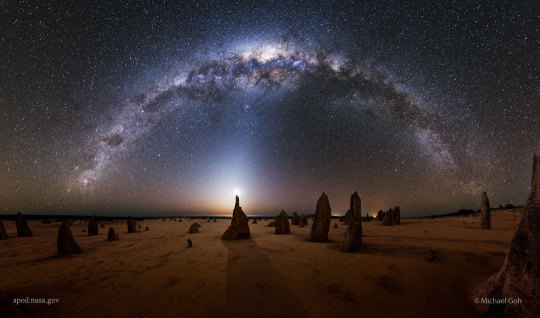
2020 October 11
Milky Way over the Pinnacles in Australia Image Credit & Copyright: Michael Goh
Explanation: What strange world is this? Earth. In the foreground of the featured image are the Pinnacles, unusual rock spires in Nambung National Park in Western Australia. Made of ancient sea shells (limestone), how these human-sized picturesque spires formed remains unknown. In the background, just past the end of the central Pinnacle, is a bright crescent Moon. The eerie glow around the Moon is mostly zodiacal light, sunlight reflected by dust grains orbiting between the planets in the Solar System. Arching across the top is the central band of our Milky Way Galaxy. Many famous stars and nebulas are also visible in the background night sky. The featured 29-panel panorama was taken and composed in 2015 September after detailed planning that involved the Moon, the rock spires, and their corresponding shadows. Even so, the strong zodiacal light was a pleasant surprise.
∞ Source: apod.nasa.gov/apod/ap201011.html
64 notes
·
View notes
Video
youtube
Dr Dani Barrington uses interactive methods to understand people’s experiences with toilets, menstrual health and hygiene, incontinence and water, with a focus on low-middle income countries. Her participatory research and teaching focuses on ensuring that everyone has access to the services that they want to use, regardless of their income or the country they call home. She's also a Co-founder of the 'Water, Sanitation and Hygiene (WASH) Failures' (@FSM_Fail) initiative, encouraging WASH professionals to be more honest about when things don't work out.
Dani is a Lecturer in the School of Population and Global Health at The University of Western Australia and a Fellow of the Higher Education Academy. She is also a Visiting Lecturer in Water, Sanitation and Health within the School of Civil Engineering at The University of Leeds and an Honorary Fellow within the School of Public Health at The University of Queensland.
In our conversation, we talk about water and sanitation systems, WASH Failures, and pantomime.
Watch this episode on YouTube. Listen to it on Spotify, Stitcher, Apple Podcasts, Google Podcasts, Breaker, Castbox, Overcast, Pocket Casts, RadioPublic, Vurbl, or RSS.
Show Notes
[00:55] Dani's beginnings in environmental chemistry and environmental systems engineering. [01:02] Dani's love of the ocean and her interest in environmental science. [01:33] Volunteering for conservation work. [02:39] Understanding the context of systems. [03:09] People are the goal. [03:45] Public health engineering is complex and involves many factors. [05:09] Choosing where Dani felt she would make an impact. [05:21] Dani's early challenges at school. [05:51] Finding her tribe at university. [06:13] Developing an interest in initiatives by organisations like UNICEF. [06:43] Why a PhD? [07:17] Algal blooms at wastewater treatment plants. [08:58] Wanting to work in international development. [10:07] Learning more about international development, capacity building, colonialism. [10:29] Engineering and social justice. [11:30] What is Engineers Without Borders (EWB)? [11:59] Support for low-to-middle income countries and remote indigenous communities. [12:37] EWB and Cambodia. [13:28] EWB educational programs and initiatives. [14:23] Working in Nepal with EWB. [14:43] Working on risk assessment of water supply and sanitation systems. [15:16] Applying preventative measures used in supply to wastewater treatment. [15:46] Developing community managed water safety plans. [16:13] The paradigm of engineer focussed plans vs community oriented ones. [16:55] Engineering and community. [19:18] Pantomime as part of your professional skillset. [20:07] The program structure in Nepal. [20:57] Understanding the diverse range of contexts between different communities. [21:56] Water utilities in the Pacific Islands. [23:37] Priorities vs geographical, social, and political limitations. [26:56] Land tenure factors and perceived vs actual risk. [28:32] The factors that contribute to a 'rational decision'. [29:22] Everyone has their own objectives and wants favourable outcomes. [30:32] Informing to the best of your ability, but respect others' priorities. [32:48] WASH Failures. [33:59] 'We weren't learning from our mistakes'. [35:03] The reluctance to document or discuss failures. [35:21] "Blunders, Bloopers and Foul-Ups" [36:00] Sanitary pads or Kindling? [36:30] The Nakuru Accord. [37:51] Surveying front-line WASH-workers about the issues. [39:26] The need for community engagement and stakeholder relationships. [40:05] The flexibility to pivot and be open about it. [41:32] The source of the reluctance to communicate failures. [43:20] Consequences and the blame game. [45:27] Failures impact the communities and can erode trust. [46:40] Moral and ethical work. [48:34] Dani's motto for life. [language warning] [48:58] Period poverty. [50:18] 'Share the Dignity'. [51:26] The stigma behind menstrual health and its impact. [54:30] You can't just engineer away behavioural factors. Talk to the social scientists. [56:54] Project Management: The Tyre Swing Problem [57:53] 'PlayPumps': Failed aid interventions. [59:54] It's more efficient to consider problems from a wholistic view. [01:00:52] Bonus Question 1: What hobby or interest do you have that is most unrelated to your field of work? [01:00:59] Geocaching. [01:03:08] Why pantomime? [01:05:37] The serious state of some of the communities. [01:06:37] Bonus Question 2: Which childhood book holds the strongest memories for you? [01:08:11] Guilty pleasures. [01:09:01] Bonus Question 3: What advice you would give someone who wants to do what you do? Or what advice should they ignore? [01:09:27] 'The Sidekick Manifesto'. [01:10:27] You don't have to save the world to make a difference. [01:12:07] Reaching out to Dani.
Topics/Resources/People Mentioned
Rockingham, Western Australia (wiki)
Ningaloo Reef (wiki)
UWA
UNICEF
Engineers Without Borders (Australia)
international development (wiki)
capacity building (wiki)
Khmer Rouge (wiki)
WaterCorp Australia (wiki)
Nepal Water for Health
UWA Pantomime Society
UN Habitat
TEDxYYC 2011: David Bamberger: What Happens When an NGO Admits Failure
Blunders, Bloopers and Foul-Ups
Have I Got News for You (wiki)
Good News Week (wiki)
The Nakuru Accord
World Toilet Day (UN) (wiki)
The Royal Academy of Engineering (UK)
period poverty (Global Citizen)
Share the Dignity (AU)
fatbergs (wiki)
The Tree Swing Cartoon (Business Balls)
PlayPumps: failed aid interventions (Humanosphere)
geocaching (wiki)
The University of Bristol
pantomime (wiki)
Cox's Bazar, Bangladesh (wiki)
Coral Reefs: Nature's Richest Realm by Roger Steene (BookDepository) (GoodReads)
Goosebumps by R. L. Stine (BookDepository) (GoodReads)
Babysitter's Club by Ann M. Martin (BookDepository) (GoodReads)
Teen Power Inc. by Emily Rodda (BookDepository) (GoodReads)
Gossip Girl (wiki)
Bridgerton (wiki)
Jane Austen (wiki)
The Sidekick Manifesto
white savior complex (wiki)
Additional Resources
WASH Failures Twitter: @FSM_Fail
Barrington, D. J., Robinson, H., Wilson, E., & Hennegan, J. (2021, March 13). Experiences of menstruation in high income countries: a systematic review, qualitative meta-synthesis and comparison to low- and middle-income countries. https://doi.org/10.31235/osf.io/tajkp
Connect with Dani
Twitter: @dani_barrington
Follow STEAM Powered
YouTube Facebook Instagram Twitter Patreon Ko-Fi
#SteamPoweredShow#women in STEM#women in STEAM#stem#steam#water#sanitation#engineering#public health#public health engineering#systems engineering
1 note
·
View note
Photo
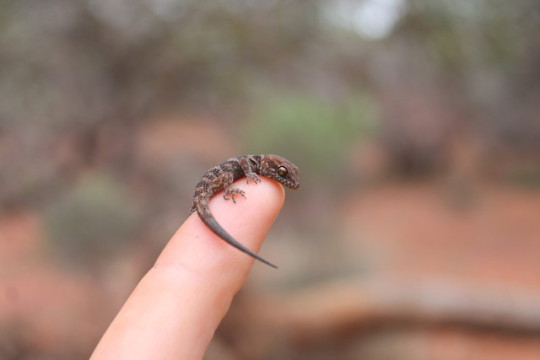
From Australian Geographic Image of the Week; September 10, 2018:
Brand-New Bynoe’s Sophie Cross
This week’s reader photo of a newly hatched Bynoe’s gecko was captured Sophie Cross.
“Bynoe’s Geckos (Heteronotia binoei) are a relatively common species, often found under woody debris. This hatchling was found in mid-west Western Australia, near Rothsay, during some field surveys for my PhD,” says Sophie. “Geckos have incredible eye colouring, and are always some of my favourite reptiles to find while out herping.”
Share your own photography and it could be featured on Australian Geographic online! You can submit your images to us directly HERE.
#australian geographic#nature#wildlife#reptiles#lizard#gecko#Bynoe's Gecko#Rothsay#Western Australia#Australia
74 notes
·
View notes
Text
truong dai hoc tay uc
Trường Đại học Tây Úc hay University of Western Australia (UWA) lừng danh nằm ngay TP. Perth xinh đẹp - thuộc nhóm 10 thành phố đáng sống nhất thế giới. #uwa #tayuc #university #western_australia https://duhocha.edu.vn/truong-dai-hoc-tay-uc/
0 notes
Photo

भारत-ऑस्ट्रेलिया अनुसूची को प्रभावित कर सकता है कोविद प्रतिबंध | क्रिकेट समाचार - टाइम्स ऑफ इंडिया https://tinyurl.com/y6nh5mp6 #adelaide_oval #board_of_control_for_cricket_in_india #cricket #cricket_australia #sydney_cricket_ground #team_india #test_cricket #tour_down_under #western_australia #अनसच #इडय #ऑफ #क #कर #करकट #कवद #टइमस #परतबध #परभवत #भरतऑसटरलय #सकत #समचर #ह
0 notes
Text
Лучшие пляжи Западной Австралии #Лучшие_пляжи_Западной_Австралии #Пляжи_Западной_Австралии #Западная_Австралия #Австралия
https://1001beach.ru/oceania/australia/western_australia
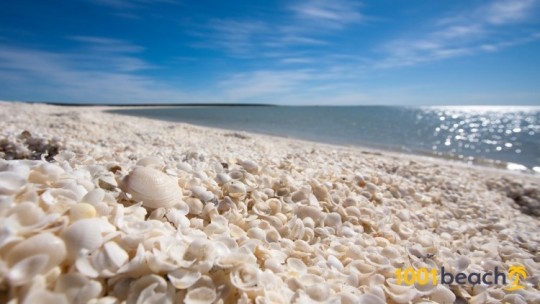
0 notes
Text
I leader, non le persone comuni avrebbero diffuso il cristianesimo più velocemente
I leader, non le persone comuni avrebbero diffuso il cristianesimo più velocemente
Una nuova religione – riporta uno studio su Nature – si diffonderebbe rapidamente nelle società più piccole con forti gerarchie politiche
Questa ricerca sul cristianesimo, pubblicata recentemente su Nature Human Behaviour, è certamente destinata a far discutere. Appare però quanto mai di attualità. In un periodo in cui, nel nostro paese e nel resto del mondo si discute dei ruoli – alcuni veri,…
View On WordPress
#1#1846#2#2018#559#564#70#antenato#anthropology#appare#area#articolo#Arts#asiatico#associati#atkinson#attualita#attualmente#auckland#Australia#australiana#austronesiane#autori#avere#base#behaviour#bilderberg#bill#Book#bretagna
0 notes
Video
youtube
2020 June 15
A Ring of Fire Sunrise Solar Eclipse Video Credit: Colin Legg & Geoff Sims; Music: Peter Nanasi
Explanation: What's rising above the horizon behind those clouds? It's the Sun. Most sunrises don't look like this, though, because most sunrises don't include the Moon. In the early morning of 2013 May 10, however, from Western Australia, the Moon was between the Earth and the rising Sun. At times, it would be hard for the uninformed to understand what was happening. In an annular eclipse, the Moon is too far from the Earth to block the entire Sun, and at most leaves a ring of fire where sunlight pours out around every edge of the Moon. The featured time-lapse video also recorded the eclipse through the high refraction of the Earth's atmosphere just above the horizon, making the unusual rising Sun and Moon appear also flattened. As the video continues on, the Sun continues to rise, and the Sun and Moon begin to separate. This weekend, a new annular solar eclipse will occur, visible from central Africa, the Arabian Peninsula, and a narrow band across Asia, with much of Earth's Eastern hemisphere being able to see a partial solar eclipse.
∞ Source: apod.nasa.gov/apod/ap200615.html
29 notes
·
View notes
Text
RT https://t.co/fDa3Oinlu2 https://t.co/Wx7vyur3wZ FCT Surface provides a range of superior quality sandblasting to clients throughout #Western_Australia https://t.co/0IbnARArPv
RT https://t.co/fDa3Oinlu2 https://t.co/Wx7vyur3wZ FCT Surface #Cleaning provides a range of superior quality sandblasting to clients throughout #Western_Australia pic.twitter.com/0IbnARArPv
— Dryco Restoration (@Dcorestoration) February 17, 2018
Source: @Dcorestoration February 17, 2018 at 02:15PM More info Water Removal
0 notes
Photo
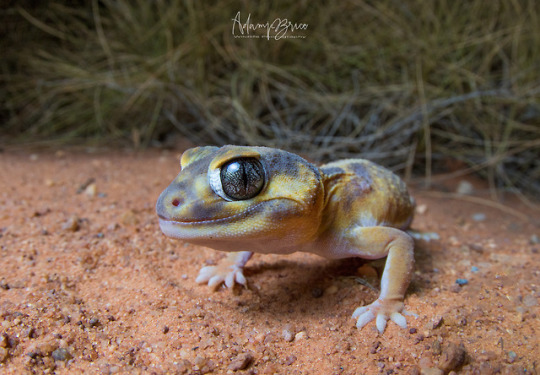
From Australian Geographic Image of the Week; October 15, 2018:
Sacrificial Tail! Adam Brice
This week’s reader photo of a common or smooth knob-tailed gecko was captured by Adam Brice near Pippingarra, Western Australia
“This is Nephrurus levis (Common **or **Smooth Knob-tailed Gecko) and in particular the sub-species called N. l. pilbarensis. This is another semi-arid/arid region specialist terrestrial gecko (no toe pads to cling to vertical surfaces),” says Adam.
“Their cute heart-shaped tails have a small knob at the end which can be autotomized (self-amputated) which then wiggles around to distract potential predators, trying to get them to take the tail instead of attacking something more vital. However, unlike most other geckos/skinks – these geckos only have one cleavage point, meaning that the whole tail will be taken not just certain segments.”
#australian geographic#nature#wildlife#reptiles#lizard#gecko#knob tailed gecko#Common Knob Tailed Gecko#Smooth Knob Tailed Gecko#Pippingarra#Western Australia#Australia
14 notes
·
View notes
Photo
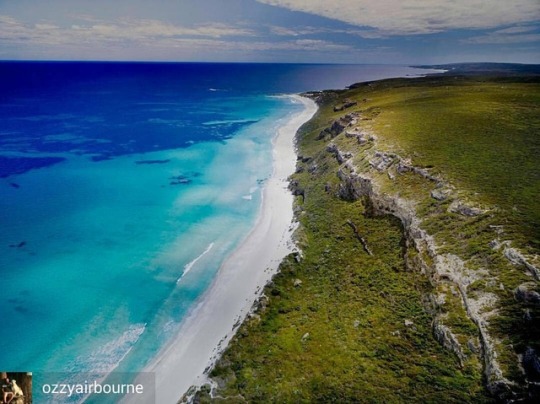
@Regranned from @ozzyairbourne - Conti Southwest WA. . . . . #australiassw #margaretriverregion #margaretriver #australia_oz #planetgo #wow_australia #instagood #instagram #picoftheday #southwestlife #southwestwa #dji #discoveraustralia #ocean #fly #amazing_wa #coast #western_australia #westernaustraliauncovered #dronephotography #dronestagram #droneLeearango123 - #regrann (at Kendall West, Florida)
#coast#margaretriverregion#southwestlife#australia_oz#picoftheday#instagram#droneleearango123#amazing_wa#dronephotography#westernaustraliauncovered#dronestagram#instagood#planetgo#australiassw#regrann#dji#fly#discoveraustralia#southwestwa#wow_australia#ocean#western_australia#margaretriver
0 notes
Text
THE PINNACLES - ANCIENT DESERT DUNES OF WESTERN AUSTRALIA
The Pinnacles are limestone formations within Nambung National Park, near the town of Cervantes, Western Australia. Hidden away among the lonely dunes and windswept heathland of Western Australia’s Turquoise Coast there is a barren, otherworldly desert of stone pillars rising up out of the golden sand. Attracting over 190,000 visitors each year, the Pinnacles of Nambung National Park are the major natural attraction in the Coral Coast region of Cervantes and Jurien Bay. The park is located roughly 200 kilometres (125 miles) north of Perth and covers an area of 17,487 hectares (43,212 acres), providing natural habitat for an extensive array of native animals and bird life.

The Pinnacles Practically unknown to the wider public until the late 1960's, the Pinnacles Desert is part of the Nambung National Park. The Pinnacles Desert was added to the existing National Park that was named after the winding Nambung River. Nambung means crooked in the local Aboriginal tribal language. It is a park with a 26 km (16 mile) stretch of sparkling coastline bordered by rolling ancient sand dunes that extend inland into banksias woodlands. Pretty red river gum trees line the banks of the Nambung River until it disappears into limestone caves. Massive sand dune fields characterise the area near the coast where the Pinnacles Desert lies. Thousands of eerie limestone pillars form the Pinnacles Desert. The moonscape scenery is made by the pillars rising out of the stark desert landscape of yellow quartz sand. It is a favourite subject for photographers.

The Pinnacles at Nambung National Park The limestone formations of the Pinnacles vary in size and shape; some are as small as a mouse whilst many are as big as 5 metres (16.5 feet) high. These unusually shaped rocks have been likened to tombstones, termite mounds and even fingers. The Pinnacles Desert is best seen at dawn or dusk when they cast long, strange shadows over the rippling yellow sand dunes. Although the desert teems with wildlife, most animals are nocturnal. However, it is not uncommon to see western grey kangaroos, emus and many sorts of reptiles and birds like black-shouldered kites hanging around the strange stones. How were the Pinnacles formed? The raw material for the limestone of the Pinnacles came from seashells in an earlier era that was rich in marine life. These shells were broken down into lime-rich sands that were blown inland to form high mobile dunes. However, the manner in which such raw materials formed the Pinnacles is the subject of debate. Three major theories have been proposed:

The Pinnacles The first theory states that they were formed as dissolutional remnants of the Tamala Limestone, i.e. that they formed as a result of a period of extensive solutional weathering (karstification). Focused solution initially formed small solutional depressions, mainly solution pipes, which were progressively enlarged over time, resulting in the pinnacle topography. Some pinnacles represent cemented void infills (microbialites and/or re-deposited sand), which are more resistant to erosion, but dissolution still played the final role in pinnacle development. A second theory states that they were formed through the preservation of tree casts buried in coastal aeolianites, where roots became groundwater conduits, resulting in the precipitation of indurated (hard) calcrete. Subsequent wind erosion of the aeolianite then exposed the calcrete pillars.

The Pinnacles A third proposal suggests that plants played an active role in the creation of the Pinnacles, based on the mechanism that formed smaller “root casts” in other parts of the world. As transpiration drew water through the soil to the roots, nutrients and other dissolved minerals flowed toward the root—a process termed "mass-flow" that can result in the accumulation of nutrients at the surface of the root, if the nutrients arrive in quantities greater than that needed for plant growth. In coastal aeolian sands that consist of large amounts of calcium (derived from marine shells), the movement of water to the roots would drive the flow of calcium to the root surface. This calcium accumulates at high concentrations around the roots and over time is converted into a calcrete. When the roots die, the space occupied by the root is subsequently also filled with a carbonate material derived from the calcium in the former tissue of the roots, and possibly also from water leaching through the structures. Although evidence has been provided for this mechanism in the formation of root casts in South Africa, evidence is still required for its role in the formation of the Pinnacles. Visiting The Pinnacles A visit to Australia’s Nambung National Park and the Pinnacles is a must. These amazing natural limestone structures, some standing as high as five metres, were formed eons ago, after the sea receded and left deposits of sea shells. Over time, coastal winds removed the surrounding sand, leaving the pillars exposed to the elements. Conventional two wheel drive vehicles can access Nambung National Park by road, south from Cervantes. Alternatively, visitors travelling from Perth can take the new Indian Ocean Drive which winds its way from Lancelin to Cervantes, adjacent to the national park.

Visiting The Pinnacles A scenic drive is also available for light vehicles, but you must remain on the marked track. The little Painted Desert and unusual white dunes can also be viewed from the Pinnacles Lookout and is a pleasurable 4-5 kilometre (2.5-3.1 mile) walk through the Nambung National Park The scenic walk and drive trail winds past the ancient limestone pillars of the Pinnacles, some several metres tall. They're scattered across the desert in their thousands, creating an eerie, alien-like landscape. Some are as high as three and half metres, and some finish in a jagged point, while others have rounded domes, resembling tombstones.

The Pinnacles Watch wild emus, galahs and other wildlife stalking through the spires and see the landscape lit in spectacular sunset colours from the lookout point. Visit the interpretive discovery centre to learn how the Pinnacles evolved and about the region's biodiversity.

Mob of Emus at The Pinnacles The park is also fringed by secluded, white beaches great for swimming, snorkelling and surfing. Go fishing from Thirsty Point Lookout or swim in the turquoise waters of Hangover Bay. Less than 8 km (5 miles) from the park's entrance, scenic Kangaroo Point is named after the mobs of kangaroos who gather on the beach at dawn and dusk. The park, like much of this coastline, is ablaze with the colours of seasonal wildflowers from August to October. Located within the park, the Pinnacles Desert Discovery Centre houses fascinating interpretative displays focused on the region’s unique flora and fauna. You’ll also find details about other national parks and nature reserves on Australia’s Coral Coast, as well as general Department of Parks and Wildlife information and a retail outlet offering a range of regional souvenirs and gifts.

The Pinnacles Desert Discovery Centre Video: The Pinnacles are a natural landscape spot representing the Western Australia. It is an oddly shaped rock area where seashells were collected in an area that was submerged by the ocean in primeval times, formed into limestone formations, and was lifted. Rooted primary forests have died out and the ground weathered over time and now only the limestone parts remain as a tower. Sources: https://en.wikipedia.org/wiki/The_Pinnacles_(Western_Australia) http://www.australiascoralcoast.com/destinations/cervantes-jurien-bay-region/the-pinnacles-and-nambung-national-park http://www.australia.com/en/places/wa/wa-pinnacles-nambung-national-park.html https://www.discoveraustralia.com.au/western_australia/pinnacles_desert. http://www.westernaustralia-travellersguide.com/pinnacles-western-australia.html Read the full article
0 notes
Text
Advice Ceiling Contractors Perth
Are you searching for the most attractive and beautiful plaster cornice designs in Perth at very reasonable prices? We at Advice Ceiling Contractors can help you out in a big way. Our contractors are dedicated in offering you with full customer satisfaction every time. Check our designs on our website. Visit - http://www.bizexposed.com/Western_Australia-AUS/B/Advice_Ceiling_Contractors_Perth-Malaga.php
0 notes